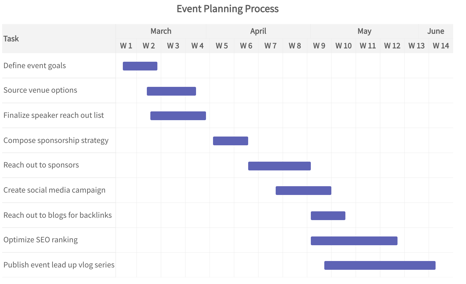Portrait of Michelangelo Buonarroti at 72 by, 1546 Early lifeMichelangelo was born on 6 March 1475 in near,. (Today, Caprese is known as Caprese Michelangelo). For several generations, his family had been small-scale bankers in Florence, but his father, Lodovico di Leonardo di Buonarroti di Simoni, failed to maintain the bank's financial status, and held occasional government positions. At the time of Michelangelo's birth, his father was the of the small town of Caprese and of. Michelangelo's mother was Francesca di Neri del Miniato di Siena. The Buonarrotis claimed to descend from the Countess; this claim remains unproven, but Michelangelo himself believed it.
 There are a lot of gantt chart Excel templates out there. We’ve done the heavy lifting for you and created a brand-new gantt chart Excel template you can download now for free! Using our premade Excel gantt chart schedule template can save you tons of time by organizing your.
There are a lot of gantt chart Excel templates out there. We’ve done the heavy lifting for you and created a brand-new gantt chart Excel template you can download now for free! Using our premade Excel gantt chart schedule template can save you tons of time by organizing your.
Several months after Michelangelo's birth, the family returned to Florence, where Michelangelo was raised. At later times, during the prolonged illness and after the death of his mother in 1481 when he was just six years old, Michelangelo lived with a stonecutter and his wife and family in the town of, where his father owned a marble quarry and a small farm.

Ar rahman tamil devotional songs mp3. Quotes Michelangelo as saying, 'If there is some good in me, it is because I was born in the subtle atmosphere of your country of Arezzo. Along with the milk of my nurse I received the knack of handling chisel and hammer, with which I make my figures.' Michelangelo's father sent him to study with the Francesco da Urbino in Florence as a young boy. The young artist, however, showed no interest in his schooling, preferring to copy paintings from churches and seek the company of painters.
At thirteen, Michelangelo was apprenticed to the painter. When Michelangelo was only fourteen, his father persuaded Ghirlandaio to pay his apprentice as an artist, which was highly unusual at the time.

When in 1489, ruler of Florence, asked Ghirlandaio for his two best pupils, Ghirlandaio sent Michelangelo. From 1490 to 1492, Michelangelo attended the academy which the Medici had founded along lines. Michelangelo studied sculpture under. At the academy, both Michelangelo's outlook and his art were subject to the influence of many of the most prominent and writers of the day including,. At this time, Michelangelo sculpted the reliefs (1490–1492) and (1491–1492).
The latter was based on a theme suggested by Poliziano and was commissioned by Lorenzo de. While both were apprenticed to Bertoldo di Giovanni, struck the 17 year old on the nose, and thus caused that disfigurement which is so conspicuous in all the portraits of Michelangelo. Early adulthoodLorenzo de' Medici's death on 8 April 1492 brought a reversal of Michelangelo's circumstances. Michelangelo left the security of the court and returned to his father's house. In the following months he carved a (1493), as a gift to the prior of the Florentine church of, who had permitted him some studies of on the corpses of the church's hospital.
Between 1493 and 1494 he bought a block of marble for a larger than life statue of, which was sent to France and subsequently disappeared sometime circa 18th century. On 20 January 1494, after heavy snowfalls, Lorenzo's heir, commissioned a snow statue, and Michelangelo again entered the court of the Medici. In the same year, the were expelled from Florence as the result of the rise of. Michelangelo left the city before the end of the political upheaval, moving to and then to. In Bologna, he was commissioned to finish the carving of the last small figures of the, in the church dedicated to that saint. Towards the end 1494, the political situation in Florence was calmer. The city, previously under threat from the French, was no longer in danger as had suffered defeats.
Michelangelo returned to Florence but received no commissions from the new city government under Savonarola. He returned to the employment of the Medici. During the half year he spent in Florence he worked on two small statues, a child St. John the Baptist and a sleeping. According to Condivi,, for whom Michelangelo had sculpted St. John the Baptist, asked that Michelangelo 'fix it so that it looked as if it had been buried' so he could 'send it to Romepass [it off as] an ancient work andsell it much better.'